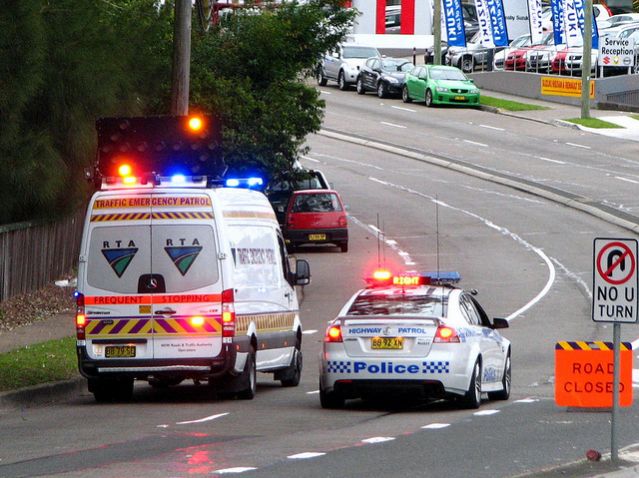Traumatic Brain Injury
Creative Rehabilitation, Part 2: Severe Head Injury
Strategies to make rehabilitation less boring and more effective
Posted June 21, 2015

The rehabilitation of people who have survived a severe head injury is a whole different beast from the rehabilitation of people who have suffered a post-concussional syndrome following a mild head injury. Severe head injury always results in a multitude of problems, invariably including cognitive problems and often physical problems as well, such as weak or paralyzed limbs. Thus rehabilitation is a long process—in fact in many cases it is a life-long process— and needs a multiple-pronged approach.
If you had the time to read the thousands of research studies on different rehabilitation programs for severe head injury, you would probably conclude that in most cases an intensive, long-term rehabilitation program works best, especially if it includes cognitive retraining, activities of daily living training, psychoeducation (for both client and family), establishment of community support networks, individual and group psychotherapy, and retraining in social skills. In addition, for those clients who do well and may in time be able to return to some sort of employment, it seems important to include on-the-job vocational retraining, ideally with a system in place for infrequent but regular maintenance checks of the client's work performance throughout the client's working life.
Families who are supportive in the early stages after the head injury may become discouraged and "burned out” as the years pass, especially as psychosocial problems are often significant for years after the injury. They as well as friends of the head-injured also need support, assistance, and sometimes even "permission” to live their own lives without guilt once the critical stages of the head injury are passed.
Although organised rehabilitation programs are becoming increasingly common, there are many head injury victims who live in areas where such programs are not available. In these cases, a program can be organised on an individual basis utilising a range of different therapists and approaches, including family and friends as “therapists.” Such a rehabilitation model could be aptly named ”Whatever-it-takes”— and this is in fact the name given to this approach by Willer and Corrigan way back in 1994. Such a program is where we could happily slot in some “creative rehabilitation” ideas.
It would take a library of books to explore all possibilities where people with severe head injuries can be helped by family and friends in creative, individualized ways, so I am going to give just a few simple, but powerful, examples that worked for a client of mine. Sam was a 21-year-old university student when he had the car crash. He was in a coma for two months, and remained in hospital for eight months before he was discharged from the hospital to his mother's house (his parents were divorced). By this stage, he knew who he was, where he was and what day it was, could move himself in his wheelchair, feed himself, understand speech quite well, and speak fluently, although in a rather flat monotone. He continued to have daily physical and cognitive rehabilitation and gradually improved. His memory was impaired but he gradually learned to accept that he needed external aids to supplement his memory—diaries and regular reminders (today smart phones make this much easier). Also like most people with severe head injury, Sam sustained frontal lobe damage and experienced many of the problems that go along with this, including poor insight, lack of motivation, and an inability to structure and organize his life. And these were the issues that ground down his family and friends. The family valliantly struggled on (although many friends faded out of the picture), until three years after Sam’s head injury his family reached crisis point. His mother was exhausted, and Sam's siblings, tired of dealing with his problems, were spending less and less time at home. Sam's father, Donald, agreed that Sam could spend every second week with him and his family, but this arrangement quickly ran into difficulties because Sam often became irritated with his two young half-siblings, leading to arguments with his father that sometimes bordered on a physical fight. Both families agreed to try joint family-centered therapy when Donald's wife, Julie, reached the end of her tether and said that if Sam stayed with them again, she would leave home.
As Sam's family members expressed their feelings within the “safe” environment of the therapy room, they learned to recognize when and in what areas their family system was struggling to cope. They were thus able to devise creative and supportive strategies that allowed the system to change in a way that minimized the stresses on each family member. An important corner was turned when the family viewed a series of videos taken of Sam once a month during the six months he was undergoing physical, occupational, and speech therapy as an inpatient in the hospital. These videos were heart wrenching; they had forgotten how terrible it had been and how far Sam had come. In particular, Donald was able to release deep feelings of grief and to revive feelings of respect and love for his son. Although Sam wasn’t upset by the videos of himself, and even laughed in places (a result of his poor insight and still rather labile emotions), hearing his family's stories and focusing on the changes in their lives rather than in his, allowed him (with a little help!) to reclaim some responsibility for the healthy functioning of the family. He readily agreed to cooperate in a cognitive-behavioral program that involved a family member holding up large warning signs when Sam began to show signs of becoming irritable. For example, if Julie noticed Sam becoming irritated with the children, she would hold up a sign saying "1st Warning: You are becoming irritable.'' If this did not result in Sam's calming down or leaving the room, she would hold up a second sign saying "Warning 2: Calm down or leave the room.'' If this did not have the desired effect, a third sign would be displayed saying "Final warning: Leave the room immediately.'' This intervention was highly successful and often resulted in the children, followed by Sam, breaking into giggles. It was effective because of the external cueing it provided for Sam (his frontal dysfunction had limited his ability to mentally cue himself to control his behavior), and also because Julie was not put in the position of having to argue with Sam, which invariably upset both of them even further. Within a month the signs were no longer necessary because Sam and the children had learned for themselves what caused Sam to become irritable, and voluntarily stopped the chain of events before a problem arose. To assist Sam’s mother, the family support system set up when Sam first left hospital was reestablished, and Sam's friends were approached about taking Sam out on weekends. At this stage in Sam's rehabilitation, the importance of each family member taking up his or her own life again was stressed.
Sam, once a fit and slim man, was rapidly gaining weight, but could not motivate himself to exercise. To the rescue came Lance, another young man who four years previously had suffered a severe head injury, and had discovered that a daily workout in the gymnasium helped him overcome the severe depression he suffered when his own recovery plateaued. Lance now wanted to help others, and he was eager to join Sam’s “rehab team” as his “buddy.” At first Lance sometimes had to pull Sam from bed and push him into the car to get him to the gymnasium, but after six months of taking him there three times a week, he was able to arrange to meet Sam at the gym, and most of the time Sam would actually arrive on time. This type of "buddy'' system can sometimes work well, especially if the "buddies'' share some premorbid characteristics. Lance and Sam were the same age, came from similar socioeconomic and cultural backgrounds, and shared a similar sense of humor. Despite the cognitive impairments that made their return to university impossible, they nevertheless had some intellectual interests in common. Their relationship highlights the point that even severe head injury does not change every aspect of the personality and intellect. It is important to discover and emphasize the characteristics that are not changed by the head injury because these characteristics can form the basis for the individual's gradual reconstruction of his self-identity. Once they had established a firm friendship, Sam and Lance were able to support each other in grieving for their losses; at times, they were even able to laugh at themselves and their mistakes, as both had suffered in similar ways.
Eventually, Sam was ready to build a new self-identity. Before he could begin this process, he grieved for the old Sam and said goodbye to those parts of him that were lost. Many therapeutic techniques were used to assist the new Sam to emerge. Throughout therapy the emphasis was on the new skills Sam had gained, and mistakes, problems, and difficulties were played down. New skills, including positive thoughts, were written in a special section in Sam's diary by Sam and other family members and friends. These new skills were reviewed regularly, and new instances that strengthened those skills were sought. Sam was also given practical training to help him with communication, sometimes with other family members joining him in role playing—for example, Sam no longer understood that everyone has a “personal space” and he tended to stand too close. Role playing ways he could judge how far away to stand, especially when he was conversing with a new woman acquaintance, resulted in much hilarity, but did give Sam some concrete guidelines which he usually managed to put into practice. Perhaps this was one of the reasons Sam’s story had a happy ending; he met a woman who fell in love with the “new” Sam, and they married and had two children.
Sadly, many stories of victims of severe head injury and their families do not have particularly happy endings, but with support and determination, a willingness to give up dreams and ambitions that can no longer be realized, and a determination to work toward new, attainable goals, it is possible for some head-injured victims to achieve a fulfilling life and leave the tragedy that halted the old one in the past.




